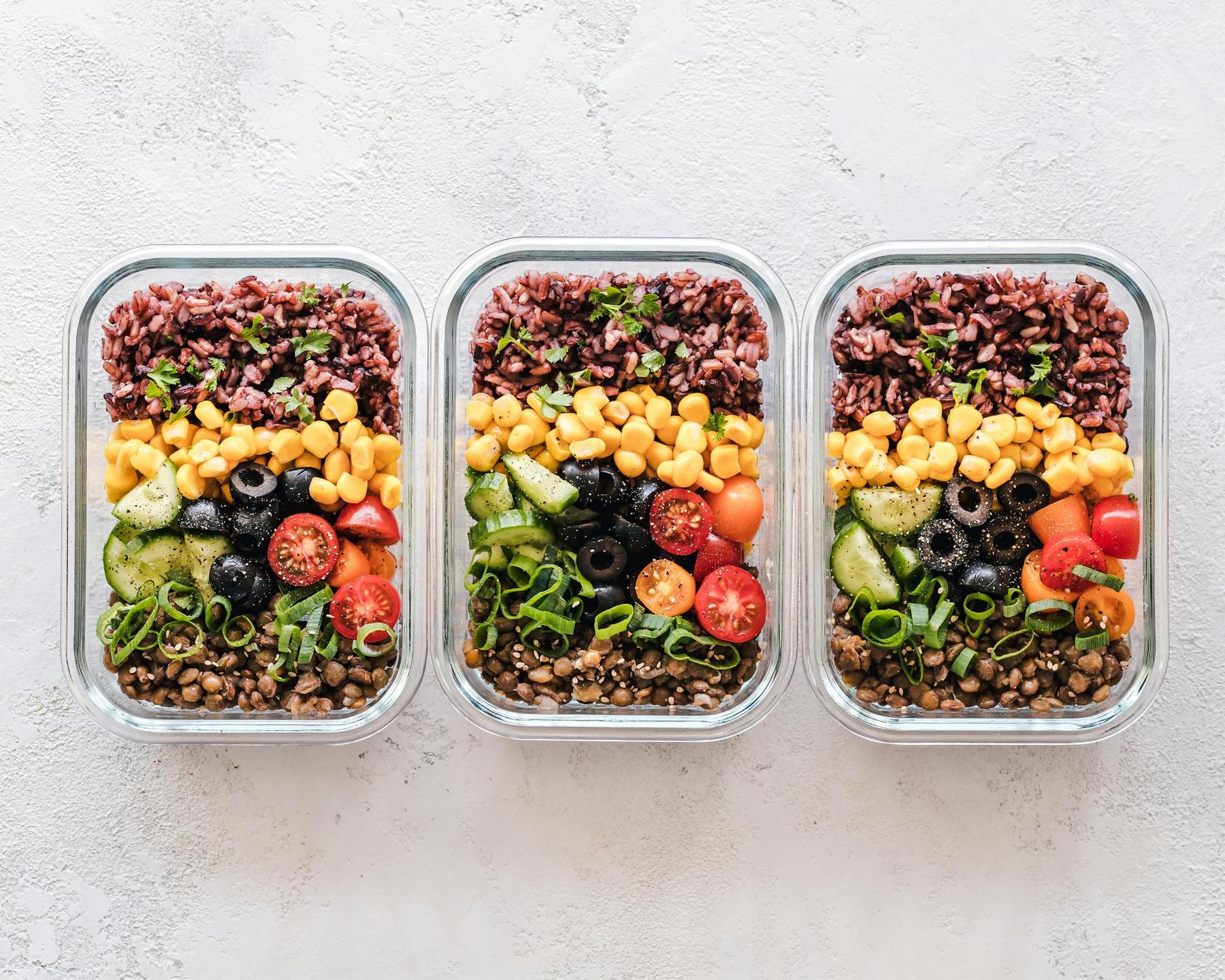In the landscape of nutrition science, macronutrients—proteins, carbohydrates, and fats—often dominate the conversation. Yet, micronutrients—the vitamins and minerals required in smaller quantities—are equally crucial for optimal health and metabolic function. Despite Australia’s abundance of fresh produce, recent data indicates that micronutrient deficiencies remain surprisingly common, even among those consuming adequate calories. This phenomenon, known as “hidden hunger,” can compromise immune function, cognitive performance, and long-term health outcomes even before clinical symptoms appear.
While many focus exclusively on calorie counting or macronutrient ratios when planning meals, overlooking micronutrient density can undermine health goals, particularly for those managing their weight. As research increasingly demonstrates, addressing these nutritional gaps through strategic meal planning not only supports physiological resilience but may also enhance metabolic efficiency and weight management outcomes.
What Are Micronutrients and Why Are They Essential for Optimal Health?
Micronutrients serve as critical cofactors in thousands of biochemical reactions throughout the body. Though required in minute amounts compared to macronutrients, these compounds are indispensable for enzymatic reactions, hormone synthesis, immune function, and cellular repair.
For instance, iron facilitates oxygen transport via haemoglobin, while vitamin D regulates calcium absorption and bone mineralisation. B vitamins function as coenzymes in energy metabolism, converting dietary carbohydrates, fats, and proteins into adenosine triphosphate (ATP)—the body’s primary energy currency. Zinc, abundant in shellfish and legumes, supports immune cell differentiation and wound healing.
When micronutrient intake falls below optimal levels, the body initiates adaptive mechanisms: prioritising essential nutrients for survival-critical functions while diverting them away from processes like collagen synthesis or neurotransmitter production. This explains why subclinical deficiencies often manifest as non-specific symptoms such as fatigue, poor concentration, or recurrent infections before progressing to overt clinical conditions.
Importantly, micronutrients work synergistically rather than in isolation. Vitamin C enhances non-heme iron absorption from plant sources, while calcium competes with zinc and iron for intestinal uptake. These complex interactions underscore why a diversified diet typically outperforms isolated supplements in supporting comprehensive nutrition.
Which Micronutrients Should Be Prioritised in Your Meal Planning?
While all micronutrients serve important functions, certain vitamins and minerals warrant special attention due to their prevalence in deficiency states and their foundational role in metabolic health.
Key Micronutrients and Their Functions
| Micronutrient | Primary Functions | Top Food Sources | Common Deficiency Signs |
|---|---|---|---|
| Iron | Oxygen transport, energy production, immune function | Red meat, poultry, lentils, fortified cereals | Fatigue, pallor, reduced cognitive performance |
| Vitamin D | Calcium absorption, immune regulation, mood stability | Fatty fish, egg yolks, fortified foods, sunshine | Muscle weakness, bone pain, increased susceptibility to infections |
| Magnesium | Energy metabolism, muscle function, nerve transmission | Nuts, seeds, whole grains, dark leafy greens | Muscle cramps, irregular heartbeat, fatigue |
| Zinc | Immune function, protein synthesis, wound healing | Oysters, beef, pumpkin seeds, chickpeas | Reduced immune function, delayed wound healing, altered taste |
| Vitamin B12 | DNA synthesis, nerve function, red blood cell formation | Animal liver, clams, trout, fortified nutritional yeast | Fatigue, weakness, nerve damage, cognitive changes |
| Calcium | Bone health, muscle contraction, nerve signalling | Dairy products, fortified plant milks, sardines with bones | Reduced bone density, muscle cramps, dental problems |
| Folate | Cell division, DNA synthesis, neural tube development | Dark leafy greens, legumes, avocado | Anaemia, fatigue, neural tube defects (pregnancy) |
The National Health and Medical Research Council (NHMRC) provides Nutrient Reference Values (NRVs) for Australia and New Zealand that specify Recommended Dietary Intakes (RDIs) tailored to age, gender, and physiological status. For instance, menstruating women require substantially more iron (18mg daily) than men (8mg daily), while pregnant individuals have increased needs for folate (600μg daily) and iodine (220μg daily).
How Can You Identify Micronutrient-Dense Foods for Your Meal Plan?
Certain foods deliver exceptional micronutrient density relative to their caloric content. Understanding these nutritional powerhouses allows for more strategic meal planning.
Micronutrient Champions
Dark green leafy vegetables (DGLVs) consistently rank among the most nutrient-dense foods. A 30g serving of spinach provides approximately 120% of daily folate requirements, along with significant amounts of vitamin A, iron, and magnesium. Similarly, organ meats offer concentrated nutrition—100g of beef liver supplies over 100% of the RDI for vitamin A, vitamin B12, and copper.
Small fish consumed with bones, such as sardines, provide an excellent calcium source, while simultaneously delivering omega-3 fatty acids and vitamin D. Shellfish, particularly oysters, contain exceptional zinc levels—six medium oysters provide over 500% of daily zinc requirements.
Plant-based eaters can maximise nutrient density through strategic food selection. Legumes offer iron and zinc, though in less bioavailable forms than animal sources. This limitation can be partially overcome by consuming vitamin C-rich foods alongside plant iron sources—for example, adding lemon juice to lentil soup or bell peppers to bean salads.
For those in Australia, local produce offers exceptional nutritional value. Barramundi provides omega-3 fatty acids and vitamin D, Sydney rock oysters deliver zinc and B12, and macadamia nuts supply magnesium and manganese. Incorporating these regional foods supports both nutritional adequacy and environmental sustainability.
What Strategies Help Maximise Micronutrient Intake in Meal Planning?
Effective meal planning integrates nutritional science with practical considerations like time constraints, budget limitations, and personal preferences.
Practical Approaches to Micronutrient-Rich Meal Planning
- Apply the Plate Model The Australian Dietary Guidelines recommend a “five food group” approach. A practical implementation is the plate model: half the plate filled with vegetables (emphasising variety and colour), one quarter with quality protein sources, and one quarter with whole grains or starchy vegetables. This visual framework naturally enhances micronutrient diversity while maintaining appropriate energy intake.
- Leverage Strategic Food Combinations Certain food pairings enhance micronutrient absorption:
- Combine vitamin C-rich foods with plant-based iron sources (e.g., tomatoes with lentils)
- Pair fat-soluble vitamins (A, D, E, K) with healthy fats for improved absorption (e.g., olive oil drizzled over leafy greens)
- Avoid consuming calcium-rich foods with iron-rich meals, as they compete for absorption
- Implement Batch Preparation Techniques Cook base ingredients like brown rice, roasted vegetables, and grilled lean proteins for use across multiple meals. This approach makes nutrient-dense foods more accessible during busy periods while allowing for varied combinations throughout the week.
- Address Practical Barriers Cost and availability often hinder adherence to micronutrient-rich diets. Consider these alternatives:
- Frozen vegetables and fruits maintain most nutrients at a lower cost
- Canned fish (e.g., sardines, salmon) provide affordable sources of omega-3s, vitamin D, and calcium
- Legumes offer economical plant-based protein with significant micronutrient content
- Seasonal produce typically costs less while offering peak nutrient content
How Do Micronutrients Support Weight Management?
Contemporary research reveals that micronutrient adequacy plays a significant role in metabolic regulation and sustainable weight management—an often-overlooked dimension of nutrition planning.
Micronutrients influence weight regulation through several mechanisms:
- Thyroid Function: Iodine and selenium support thyroid hormone production, which regulates basal metabolic rate. Suboptimal levels can reduce energy expenditure independent of activity levels.
- Mitochondrial Efficiency: B vitamins, iron, and magnesium function as cofactors in energy production pathways. Deficiencies can compromise metabolic efficiency, potentially contributing to fatigue and reduced physical activity.
- Appetite Regulation: Zinc and chromium enhance insulin sensitivity, helping stabilise blood glucose levels and reduce cravings. Calcium has been associated with improved satiety signalling in clinical studies.
- Fat Metabolism: Specific B vitamins activate enzymes involved in fat oxidation, while magnesium facilitates lipase activity, enhancing the body’s ability to utilise stored fat for energy.
Clinical data suggests that individuals with adequate micronutrient status typically achieve better outcomes during structured weight management programs compared to those with suboptimal levels. This relationship underscores the importance of nutrient quality—not just calorie restriction—when designing sustainable weight management approaches.
How Should Different Populations Adjust Their Micronutrient Intake?
Nutritional requirements vary significantly across life stages and physiological conditions, necessitating tailored approaches to micronutrient planning.
Pregnancy and Lactation
Pregnancy increases requirements for folate (600μg/day), iron (27mg/day), and iodine (220μg/day) to support foetal development. Prenatal meal plans should emphasise fortified cereals, lean red meat, and iodine-rich seafood like prawns. Postpartum, calcium and vitamin D become especially important for maternal bone health, achievable through dairy or fortified alternatives.
Older Adults
Age-related physiological changes affect micronutrient needs and utilisation. Reduced gastric acid production can impair vitamin B12 absorption, while vitamin D synthesis in the skin becomes less efficient. Calcium requirements increase to preserve bone density. Soft-cooked vegetables and nutrient-dense stews enhance digestibility while preserving nutritional value.
Those Managing Their Weight
Hypocaloric diets for weight management must prioritise nutrient density to prevent deficiencies. Strategies include:
- Substituting refined grains with nutrient-rich alternatives like quinoa or amaranth
- Emphasising low-energy, high-volume foods such as leafy greens and cruciferous vegetables
- Selecting lean proteins that provide essential micronutrients (e.g., seafood for iodine and zinc)
- Including strategic sources of healthy fats to support fat-soluble vitamin absorption
Integrating Micronutrients into Practical Meal Plans
The Mediterranean dietary pattern, adapted for Australian contexts, exemplifies micronutrient-rich eating. This approach combines whole grains, legumes, olive oil, and seasonal produce with moderate amounts of fish, dairy, and poultry.
A sample day might include:
Breakfast: Greek yoghurt topped with mixed berries, walnuts, and a drizzle of honey (providing calcium, vitamin C, omega-3s)
Lunch: Quinoa salad with roasted vegetables, chickpeas, olive oil, and feta cheese (delivering B vitamins, iron, magnesium, and calcium)
Dinner: Grilled barramundi with roasted sweet potato and steamed broccoli (supplying vitamin D, vitamin A, and vitamin C)
Snack: Orange slices with a small handful of almonds (offering vitamin C, vitamin E, and magnesium)
Conclusion: Strategic Micronutrient Planning for Optimal Health
Prioritising micronutrients in your meal planning transcends mere deficiency prevention—it represents a foundational approach to comprehensive health optimisation. By leveraging locally available, nutrient-dense foods and adhering to evidence-based guidelines, you can significantly enhance physiological resilience and metabolic efficiency.
The most effective strategy involves consuming diverse whole foods rather than relying on isolated supplements, with particular emphasis on dark leafy greens, quality proteins, colourful vegetables and fruits, nutritious fats, and whole grains. Food combinations matter as much as individual choices, with strategic pairings enhancing nutrient absorption and utilisation.
For those managing their weight, micronutrient adequacy may prove especially crucial, supporting efficient metabolism and potentially improving outcomes from structured weight management approaches. This underscores the synergistic relationship between nutrient quality and energy balance—a principle increasingly recognised in contemporary nutritional science.



